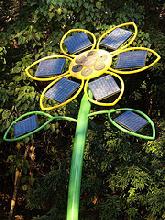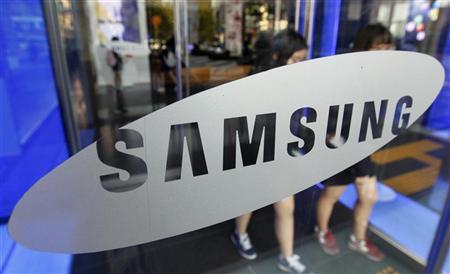 A simple plug-and-play technology, the solar home system is providing an excellent off-grid electricity solution for rural Bangladesh. Harnessing solar energy, these systems can be purchased against micro-loans which can be repaid in easy installments.
A simple plug-and-play technology, the solar home system is providing an excellent off-grid electricity solution for rural Bangladesh. Harnessing solar energy, these systems can be purchased against micro-loans which can be repaid in easy installments.
Two bone-rattling kilometres on a brick-cobbled road, beyond the market and the grid, past the flooded paddy fields lit intermittently by fireflies in the twilight is where the three Chowdhury brothers live, their homes awash in the white radiance of CFL bulbs. This is solar country, on the island of Mehindiganj in south Bangladesh.
Flipping through yesterday’s paper Hamid Chowdhury looked up and said, “Welcome to Mehindiganj.” In clipped English, he said he is satisfied with his solar home system (SHS), especially with the after-sale service of Grameen Shakti, the largest vendor in the country. An 80 Watts peak (Wp) system powers seven CFL lamps and a black-and-white TV in his six-room house.
All three Chowdhury brothers, former zamindars, are Grameen Shakti customers. Despite their obvious clout, there’s little hope that the grid, two km away in the Mehindiganj market, will reach their homes anytime soon. “Every year, the government promises the grid will reach us next year,” said Sirajuddin Chowdhury. There’s no economic rationale for the Palli Bidyut Samitis, cooperatives that manage rural electrification in Bangladesh, to extend the grid to areas with so few customers.
Diesel is expensive on the islands while kerosene lanterns only illuminate weakly. Electricity from solar panels powers lights and fans, recharges mobile phones, lights the family poultry farm— and allows them to watch an occasional Bollywood film on an LCD television set.
Naturally, solar
A simple plug-and-play technology, the solar home system is well suited to a country with 300 sunny days on an average. Home systems can easily meet the small needs of two-thirds of the 100 million rural Bangladeshis with no access to electricity from the grid.
Grameen Shakti, one of 32 Grameen social businesses, is perhaps the world’s fastest growing rural renewable energy programme. Since its inception in 1996 till November 2010, Grameen Shakti had installed 500,524 home systems across all 64 districts of Bangladesh. It installs 20,000 systems each month. Rural Services Foundation (RSF), an NGO, is a distant second with 94,482 installations till October this year.
On the island of Chormitua, across Mehindiganj, Grameen Shakti has targeted small traders, shopkeepers and artisans. Markets start late on these islands, a hub for hilsa fish, betel leaf and betel nut. Small crowds gather outside the general store-cum-tea stalls in the evenings to watch the lone Bangladesh TV channel on their blackand- white television sets. Illumination extends trading hours as fishers and agricultural workers stroll the market on their way home.
Rasul Mahmud, 22, who owns a small general store on the ghats is testing the limits of his 40 Wp system—he’s hooked up three CFL lamps, a black-and-white television set, a small fan, a mobile charger and a music system. He rents out one lamp to a tea stall nextdoor for taka (Tk) 10 (Rs 1=Tk 1.6) a day.
Grameen’s micro-utility scheme allows small shopkeepers, and fish and vegetable vendors to purchase up to a 50 Wp system on a 10% down payment, with zero-interest loan repayment spread over 48 months. Under this scheme, SHS owners are required to rent the other solar lamps to their neighbours at Tk 5 to 7 per day per lamp. As of September 2010, the company had distributed more than 10,000 home systems under this scheme alone.
It made sense, Mahmud said, to switch from a kerosene lantern to a solar home system. Kerosene, like diesel, is expensive on the islands; it costs Tk 52 a litre, six takas more than in Dhaka. This is Mahmud’s second solar system—he had bought one earlier for his house. He cleared his loan in 36 installments of Tk 631 each; a framed certificate of ownership hangs in his shop.
The key to the programme’s success is the money saved by switching to solar —the company claims middle-income households save about Tk 800 each month, while low-income households save Tk 200. Electricity is crucial for Mijanu Rahman, who owns a chemist’s shop in Bangla Bazaar, a 10-minute walk from the Chormitua ghat. Rahman’s basic medical training and a degree in pharmacy means he is de facto the island’s doctor, often called upon to diagnose (mostly stomach ailments) and to prescribe medicines (mostly antibiotics).
Earlier, traders in Bangla Bazaar depended on a diesel generator, paying 10 Tk per lamp each day. Rahman paid Tk 900 each month for his three lights; more than the Tk 600 installments he now pays for his 65 Wp system and a black-and-white TV.
Grameen Shakti muscled its way to the top despite the high upfront costs. It does not target the very poor, but the poor. The cheapest 10 Wp system, which can power two LED lights and one five-Watt CFL bulb, retails at Tk 8,800 in rural areas. After a 15% down payment, it makes for an EMI of Tk 220 for a 36-month loan term.
Asking customers to pay about US $400 for a 40-Wp system is like asking a household with an average monthly income of US $60 to pay for 20 years’ worth of electricity bills in one go. Still, the social business turned a profit in four years, by combining micro-finance with efficient after-sale service and by involving local actors to keep costs low. Customers can make a 15 or a 25% down payment and pay the remainder on EMIs of a 36- or 24-month loan term respectively, and at a flat service charge (a more acceptable term than interest rate) that ranges from four% to six per cent. There’s a four per cent discount for those who pay the entire cost upfront. About 80% of all customers buy systems on credit. Grameen Shakti’s home system makes economic sense to its customers: purchase on loan against a small down payment and repayment in easy installments; loans extended without collateral; a buy-back option against the depreciated value of equipment in case the grid reaches the area; an efficient aftersale service; and if they so choose, an annual maintenance contract for Tk 300 a year that covers the post-warranty period. Grameen solar engineers also train customers on the use of the home system equipment.
The company has an extensive on-the- ground presence and service centre network of 1,159 offices staffed by 8,975 employees across the country. It serves three million people in Bangladesh. Solar electrified villages are easy to spot along the shoreline from the Barisal-to-Mehindiganj launch—TV antennae and solar panels fastened to the tall, storm-proof betel-nut trees that are plentiful on these islands.
Grameen Shakti has 1,400 customers in Mehindiganj alone, and another 40 customers, mostly shopkeepers and traders in and around Bangla Bazaar. The divisional office at Barisal, one of 13 in Bangladesh, handles all coastal areas in south Bangladesh and is an overnight ferry ride from Dhaka. The office of the divisional manager, Mukhlasur Rahman, is also his residence and a warehouse packed with batteries, PV panels and other solar components. “Business is good,” said Rahman, pointing to the solar batteries being unloaded from a truck parked at the office entrance. This divisional office sold 3,000 systems in August alone. Employees are set daunting sales and service targets. “This is a tough job and the hours are long,” Rahman said late one evening after his daily meetin with office staff. “That’s because everything happens at our customers’ doorstep—marketing, selling, loan disbursement, after-sales service, and recovery of loans.” Each system sold, when still under warranty, has to be serviced once a month by a Grameen Shakti solar technician for a period of three years. As about half of the solar home systems have been sold in the past three years alone, the human effort taken to visit about 250,000 households each month is mind-numbing. About five per cent of the company’s Tk 1,000-crore annual turnover is spent on its employees’ travel allowance.
It takes immense effort to collect dues from customers’ doorsteps. “Yet this is crucial,” pointed out Abser Kamal, Grameen Shakti’s acting managing director (MD). “As 80% of our customers buy a solar system on credit, our focus is on providing good after-sale service; otherwise, we would find it difficult to reclaim dues.” Customers refuse to pay if there’s a breakdown in equipment or if they perceive any tardiness in after-sale service. Naturally, there is frequent staff turnover. Grameen Shakti has an annual staff turnover of close to 40%, claims Rajeev Munankami, senior advisor at Dutch development agency SNV’s biogas programme in Bangladesh, and a close observer of the country’s renewable energy programmes. “Jobs here are very, very hard as compared to other Grameen businesses,” said Kamal. “We think of ourselves as social engineers. I constantly tell my team, ‘This is your institution. You have to make it work. It has given jobs to you. You have to create demand at the field level’.”
Green jobs
This exponential growth of the solar home system programme means more trained solar engineers, more service centres, and more trained people to assemble parts for solar home systems, most often in remote areas. The company turned these to its advantage by training and employing people from the area. This creates jobs and lowers operations costs. This it did by focusing on the symbolic and at times lyrical relationship women have with energy. “In Bangladeshi homes, it is women who are responsible for lighting up the home,” said acting MD, Abser Kamal. So far, it set up 46 Grameen Technology Centres (GTC) and trained 1,500 women as certified solar technicians and entrepreneurs. The technology centres are central to the company’s expansion plans.
Jobs at Grameen centres are coveted as the earnings are good with the strong demand for solar home systems. Women are paid per piece of equipment assembled, for instance Tk 7 per lamp shade and 14 Tk for each charge controller assembled and can earn up to Tk 350 each day or more. “The idea is for rural people to help rural people,” said Mukhlasur Rahman. China Rani Acharjo at the GTC in Jhalakati, Barisal division, earns enough to send her son Tk 2,000 each month to support his education at Dhaka University (“he’s studying BA English Honours course”, she proudly said), and also supplements her husband’s earnings.
A fallout of the expansion is shortage of trained engineers, said Rajeev Munankami. “There are no government certified technicians; only NGO certified ones.” If participating NGOs lose interest in pushing solar, it will impact after-sale service, he pointed out. There’s a definite push to indigenise components to keep costs low. The PV panels are imported, but most other components are now manufactured in Bangladesh. Rahimafrooz, the country’s largest solar battery manufacturer doubled its capacity in the past few years to meet domestic demand. Demand is also increasing for compatible appliances and equipment. “In future, I see a good opportunity for us to produce battery cables, CFLs, tubelights, charge controllers, and maybe even PV panels,” said Abser Kamal. “Perhaps through a separate Grameen company,” he added.
Institutional anchoring
The proliferation of solar home systems can be explained in part by the strong anchoring by Infrastructure Development Company Limited (IDCOL), a government-owned nonbank financial institution that funds infrastructure projects. Renewable energy accounts for close to 40% of IDCOL’s investment portfolio. But it does more than direct donor funds. IDCOL selects partner organisations (POs) to implement the programme. IDCOL has 21 partners; Grameen Shakti is the largest. The list of partners is a veritable who’s who of Bangladeshi NGOs, including BRAC, RSF—the social development initiative of Rahimafrooz—and COAST Trust, among others that also include private companies. Only a few partners are focused on solar power, however. “If tomorrow funds pour in for HIV, what will happen to this renewables programme?” Munankami said.
Past all targets
Under IDCOL, the home system programme has surpassed all targets (see graph, above). The initial World Banksupported target of 50,000 systems was achieved in August 2005, three years ahead of schedule and US $2 million below estimated costs. As of September 2010, the programme installed 680,000 systems, or about 34 MW of the 5,271 MW generated in the country. IDCOL installs about 30,000 home systems every month. It has now upped its goal to 2.5 million systems by 2014. While partners such as Grameen Shakti leverage scale to get bargain prices on solar hardware (that’s their profit), IDCOL charges the donors a fee of seven euros per system installed by POs. The roles are clear. Partners select the project areas and potential customers, extend loans, install solar systems and provide maintenance. IDCOL channels grants and soft loans to the partners, sets technical specifications for solar equipment, monitors partners’ financial performance and helps build their capacities. The government, on its part, pitches in by waiving duties on the import of key components. IDCOL financially supports partners with grants and soft loans—grants to its partner suppliers of SHS hardware to reduce the overall cost of approved solar equipment; soft loans at eight per cent for an eight-year maturity term to partners to manage their respective microcredit services. Partners also receive an ‘institutional capacity building grant’.
IDCOL funds cover about 80% of the credit project partners give. IDCOL grants reduce with the progress of the project – from US $90 per SHS for the first 20,000 systems, to the equivalent of €20 (US $28) per system for 500,000 systems and more. The logic is to incubate and then withdraw as market forces and demand take over. It is compulsory for all to provide after-sale service.
Bank, the country’s central bank, also chips in. It has set aside Tk 2,000 million for commercial banks and financial institutions to on-lend to renewable energy projects at a low five per cent interest rate. A key role, says Islam Sharif, CEO of IDCOL, is the close and routine scrutiny of the performance of partners. “Monitoring is very important as we have a cultural tendency to take shortcuts,” said Islam. “I have 50 inspectors in the field, and two inspection offices, in Sylhet and Khulna.” Sharif minces no words in advocating commercialisation. “This makes it very different from a donation mentality,” he said, referring to the country’s subsidy and tariff-based solar projects (see Solar isolated).
“Everyone must make money— even us. Partners should see money in the scheme, and the end user must also see benefits. It must be financially binding for all,” Sharif added.
Source : Down to Earth /Aditya Batra



































